Olympus PEN EP-3 Review
Olympus PEN EP-3
Does the flagship Olympus PEN EP-3 deliver more than just stylish retro looks?
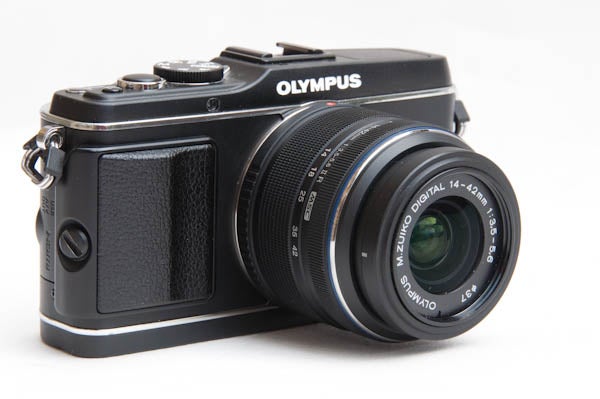
Verdict
Pros
- Great image quality
- Enthusiast-level shooting features
- Solid build quality and stylish design
Cons
- Zoom ring a bit hard to reach
- AWB can be fooled under artificial light
- Very expensive
Key Specifications
- Review Price: £799.99
- 12.3-megapixels
- TruPic VI image processor
- Fast 35-point AF system
- Art Filters
- Full HD movie recording
Like all models within the current digital PEN line-up the PEN EP-3 takes
its inspiration from the original Olympus PEN film cameras of the 1960s
and 70s. These small, portable and mostly fixed-lens cameras proved a
hit with consumers, not least because their half-frame design meant
casual photographers could eek out 72 shots from a standard roll of
36-exposure 35mm film.
Of course, now that everything has gone digital you’ll need to shoot many, many more than that to fill the average memory card, although in keeping with its half-frame heritage the Olympus PEN EP-3 does use a sensor that’s slightly smaller than the APS-C sensors used in many DSLRs.
That said, the PEN EP-3’s 17.3 x 13mm Micro Four Thirds chip is still considerably bigger than your average compact sensor. The benefits of this in relation to image quality are huge. Not only does the PEN EP-3’s larger sensor result in better overall low-light performance, it also enables the camera to create a shallower depth-of-field at large apertures, at least compared to what you’d be able to achieve with a small-sensor compact.
While the Olympus PEN EP-3 is well suited to novices on account of its easy operation it’s quite and advanced camera underneath, offering more than its fair share of customisation. This is backed up by a generous number of advanced features that are sure to appeal to enthusiasts used to working with mid- to high-end DSLRs – from flexible AE-AL Lock button configurations to advanced bracketing options and even wireless flash control via the PEN EP-3’s newly installed pop-up flash.
But, of course, all this comes at some cost. Whichever way you look at it, at a penny short of £800, the PEN EP-3 is expensive. In fact, at this kind of price the PEN EP-3 undoubtedly falls into premium territory and, as such, its appeal will surely be limited to those that can afford it and those that want on so much, they’ll somehow find a way to afford it.
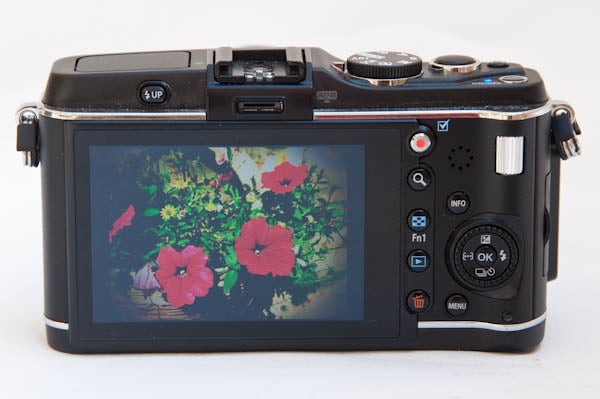
Even before factoring in the not inconsiderable price tag, the PEN EP-3 faces some pretty stiff competition. Sticking with the Micro Four Thirds standard, the recently launched Panasonic Lumix G3 can be picked up for around £530 with a 14-42mm lens, and while it may lack the fashionable retro styling of the PEN EP-3 it does offer an EVF and articulated monitor. The Panasonic Lumix DMC-GH2 (£750 with 14-42mm lens), meanwhile, is another highly specified competitor with solid video recording abilities and a 16.2MP sensor.
Elsewhere, the Sony NEX-5 (£600 with 18-55mm kit lens) uses a larger sensor than the PEN EP-3 and yet is slightly smaller and lighter overall. Then there’s the Fujifilm X100 to consider, though it will set you back another £200 on top. In fact, given the Olympus PEN EP-3’s price tag and target market, you might even be tempted to consider an advanced entry-level DSLR, with models like the Canon 600D (£700 with 18-55mm) and Nikon D5100 (£630 with 18-55mm) both delivering great image quality and heaps of user customisation, albeit in a much bigger overall package than the PEN EP-3.
Has the Olympus PEN EP-3 got what it takes to compete for your hard-earned cash against these models? Let’s take a closer look and find out…
The EP-3 uses a standard size Micro Four Thirds (MFT) Live MOS sensor with an effective resolution of 12.3-megapixels, backed up by Olympus’ TruPic VI image processor. 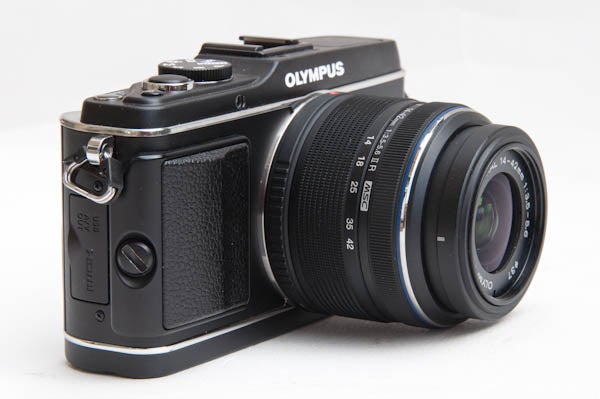
While the default aspect is, of course, 4:3, there are also options to shoot in 3:2, 16:9 and 6:6, all at a reduced maximum resolution. Maximum output at full resolution is 4032 x 3024 pixels, although you can also choose to record at Medium and Small settings in all aspects. There are two JPEG compression settings: Fine and Normal.
The EP-3 is able to shoot continuously at a maximum rate of 3fps, which isn’t all that quick. The camera’s sensitivity range, however, stretches from a base of ISO 200 up to ISO 12,800 – one extra stop than the EP-2 could manage. For greater control, ISO values rise in small increments rather than simply ‘doubling up’ as is more common. In practical terms, this means you can set the EP-3 to ISO 640 if you think a situation warrants it, whereas many other cameras would limit you to a choice of either ISO 400 or 800.
Traditionalists will be pleased to learn that the EP-3 offers the regular quartet of Program, Aperture-priority, Shutter-priority and fully Manual shooting modes. Backing these up is a fully Automatic option, a number of Scene modes and 10 individual Art filters.
These Art Filters are hardly new to Olympus cameras, indeed Olympus was the first manufacturer to really push them on digital cameras with the launch of the E-30 back in 2008. The EP-3 gets ten Filters in total, two more than the EP-2, and they are: Pop Art, Soft Focus, Pale & Light Colour, Light Tone, Grainy Film, Pin Hole, Mini, Cross-Process, Gentle Sepia, and Dramatic Tone. 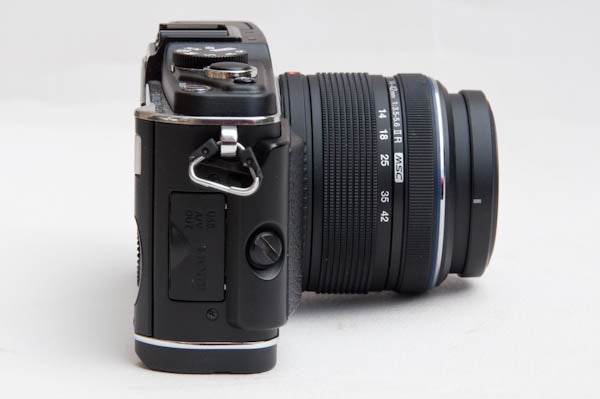
Unlike its predecessor, the EP-3 gets a pop-up flash, neatly housed inside the camera body on its left shoulder. Offering a Guide Number of 10 (at ISO 200) it’s activated by a button on the back and can be used to trigger remote flashguns should you wish to get creative with off-camera flash. In addition, there’s also the option to set its power output manually, which is a neat touch and in keeping with the EP-3’s general theme of flexibility.
Despite the addition of a pop-up flash to the EP-3, the multi-purpose hot-shoe – or Accessory Port, as Olympus calls it – remains in place. This gives you access to a wide range of PEN accessories tailor-made for it – from optical and electronic viewfinders, to external microphone adaptors and even modules that allow you to transfer your images via Bluetooth.
The back of the EP-3 is fitted with an all-new 3-inch, 610k-dot OLED screen that offers bags of contrast and saturation, alongside generous viewing angles. While the screen is easy enough to see in generally bright conditions outdoors, it does get harder to see in direct sunlight.
The EP-3 can shoot in both JPEG and 12-bit Raw, or in deed both simultaneously. Should you wish to shoot in JPEG, you have the option of five Picture Mode colour profiles, each of which will give your images a predetermined look, and all of which can be further fine tuned for contrast, sharpness, saturation and gradation. The five presets are: i-Enhance, Vivid, Natural, Muted and Portrait. In addition, there’s also a B&W option that comes with filter and split-tone options, and a blank Custom profile.
Movie enthusiasts are well catered for, with the EP-3 offering 1920 x 1080p Full HD movie recording in either 60i/20Mbps or 60i/17Mbps quality, along with 1280 x 720 HD options at 60p in both 20Mbps and 17Mbps. Movies recorded at these settings are stored in the AVCHD format. Sound is recorded in stereo via two microphones on top of the camera, and while there’s no external microphone input, there is an external microphone adaptor available that slots into the Accessory Port.
In keeping with the original film-based PEN range, the EP-3 is significantly smaller than a regular DSLR, although you’ll still need fairly large coat pockets should you want to carry one around without having to resort to a bag or dedicated carry pouch. Thanks to its mostly metal construction the EP-3 feels reassuringly solid and weighty, too. In the hand, there’s definitely a premium feel about it.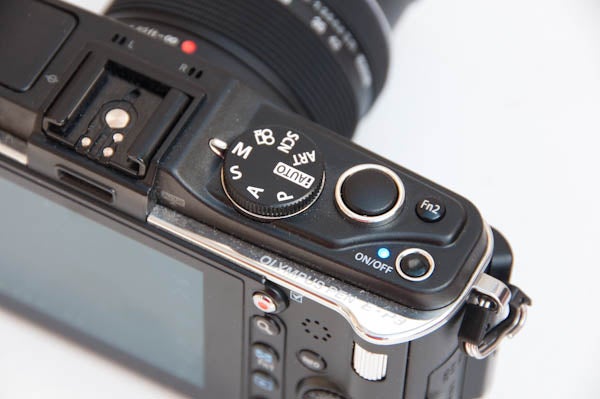
One clever new feature of the EP-3 is the addition of a detachable handgrip that can be unscrewed and swapped for alternative grips, depending on how much depth you want and what kind of finish you prefer. The handgrip our review model was finished in the same kind of faux leather you might have found on the front of an old Olympus OM-2 back in 1976 – very stylish and easy to grip.
Buttons are well-placed and easy to reach. There aren’t too many of them either, which prevents any kind of button-clutter, allowing what is there space to breath. We especially like how the direction of the thumbwheel can be customised and the flexibility of having two Function buttons to call upon. That said, having the ‘Format Memory Card’ option as one of the first things you encounter within the in-camera menus does strike as a disaster waiting to happen for some unlucky owners.
In-camera menus are fairly easy to navigate and while the EP-3 offers lots of customisation for advanced users, newcomers and novices are also well looked after too. Indeed, you can even turn the Custom Menu and Accessory Port Menus off altogether should you wish, from where you can simply use the OK button while shooting to call up a simple Quick Menu of core settings.
The new high-resolution OLED monitor we mentioned above doubles up with some limited touch-screen functionality. While perfectly responsive, you can only really control a handful of things with it. First of these, and by far the most useful, is the new Touch AF feature that allows you to select a point of focus simply by touching it on the monitor. In addition, you can also use the screen to control simplified sliders while in iAuto mode, and to quick-scroll through your images in Playback mode. You can’t use it to browse any in-camera menus, or change any other settings though. 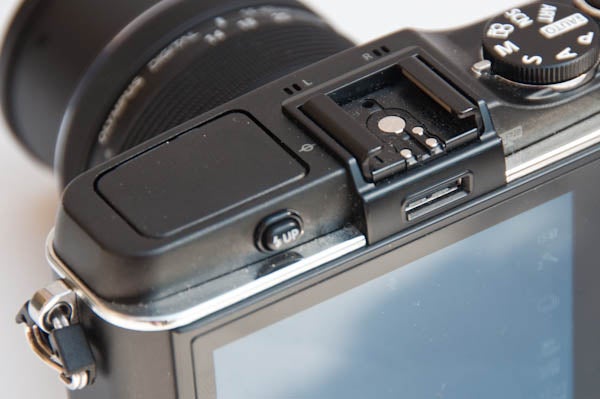
We clocked the EP-3’s start-up speed at a fraction under two seconds. While the camera (and OLED monitor) switches on pretty much instantly, it takes another second or so before the autofocus system springs to life. It’s also worth noting that the new kit lens needs to be unlocked (i.e. – extended) before the camera can be used in shooting mode. You can, however, use the camera in playback mode to review your images with the lens locked.
Speaking of autofocus, Olympus claims the EP-3’s contrast-detect AF system is the fastest in the world. While we’re not able to confirm or deny this, we are happy to report that it is extremely fast – at least in good light. In poor light indoors at night we found the EP-3 struggled a bit, although it does have an AF Assist light built in that can help out with close-range subjects.
Using the camera in single-shot mode we were able to shoot either JPEGs or Raw files at about 1fps, with no limit on the number of successive shots. Using the EP-3 in Continuous mode, we were able to reel off about 17 JPEGs before the buffer filled and the camera began to slow down. Switching to Raw recording this dropped to about 12 frames, while in simultaneous Raw and JPEG mode the figure dropped further to just nine frames.
Our review sample came fitted with the all-new Zuiko 14-42mm f/3.5-5.6 II R kit lens, although the camera is also bundled with a 17mm ‘pancake’ lens kit. Thanks to the 2x crop factor of the Micro Four Thirds system, the Zuiko’s 14-42mm equates to 28-84mm in 35mm terms, which makes it highly practical for general use shooting landscapes and portraits. As with its predecessors a sliding lock mechanism on the barrel allows the zoom to fold into itself for a bit of extra compactness. 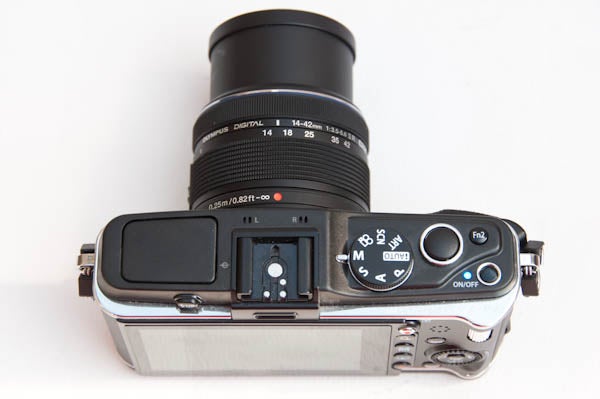
While it’s a well-crafted optic, the zoom ring isn’t particularly deep and is located very close to the camera body, which can initially prove a little fiddly. We do like how the camera automatically zooms in when you engage the manual focus ring though, and how the enlarged image on the rear monitor allows you to fine-tune your focus.
Results wise, the Zuiko delivers impressive levels sharpness not just in the centre but also in the edges and corners. The amount of JPEG sharpening can of course be tinkered with via the Picture Mode options, but used on a 0 or 1 setting the EP-3 produces crisp but lifelike images, free from haloing and other undesirable by-products of over-sharpening.
Fringing is well controlled too, with the only the occasional purple fringe showing up, and even then only on the kind of extreme high-contrast borders where bright sunlight meets dark shadow.
Of the EP-3’s five Picture Mode options, we found ourselves favouring the i-Enhance setting on account of the punchy colour and rich tones it produces. Of course, if you want something a bit more muted there are options for that too. The Art Filters all work well within their own remits and can be quite fun to use too.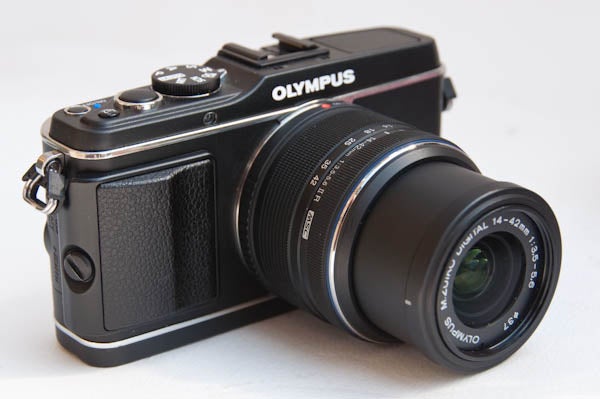
Metering duties on the EP-3 are handled by a Through-The-Lens (TTL) module using 324-zones. The system proves pretty accurate on the whole, and when faced with high-contrast scenes the EP-3 tends to maintain a good balance between highlights and shadow retention.
White Balance is generally reliable too, although we did notice a tendency for the Automatic White Balance setting to occasionally make artificial light conditions indoors look too warm.
There’s a lot to be said for pegging the EP-3’s resolution at 12MP. It’s a sensible decision by Olympus that clearly benefits the camera’s smaller MFT sensor when light levels are less than ideal. There’s really no problem with making larger prints from a 12MP camera either, it’s plenty enough for good quality poster-sized prints.
While sharpness and detail are naturally at their best at the base ISO 200 to ISO 400 settings, the EP-3 does a very good job in the mid-sensitivity ranges of IS0 800 to ISO 1600 too, with only a very minor loss of detail as noise begins to creep in and soften the image. ISO 3200 is the point at which the effects of noise become visible at below 100%, although images often remain usable. At ISO 6400 images become dramatically softer, while at the top setting of ISO 12,800 red colour noise becomes so prevalent as to pretty much wreck the image.
Verdict

ISO 250

ISO 320

ISO 400

ISO 500

ISO 640

ISO 800

ISO 1000

ISO 1250

ISO 1600

ISO 2000

ISO 2500

ISO 3200

ISO 4000

ISO 5000

ISO 6400

ISO 10000

ISO 12,800
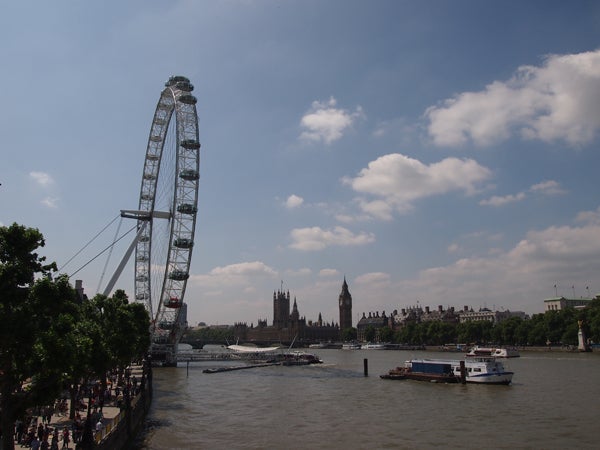
At 18mm
(1/1000 @ f/9, 14mm, ISO 200, AWB)

At 42mm
(1/640sec @f/9, 42mm, ISO 200, AWB)
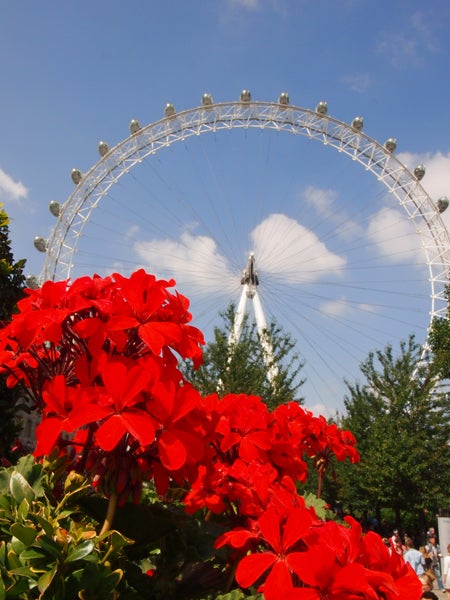
The i-Enhance colour profile produces punchy colours
(1/80sec @ f/22, 18mm, ISO 200, AWB)
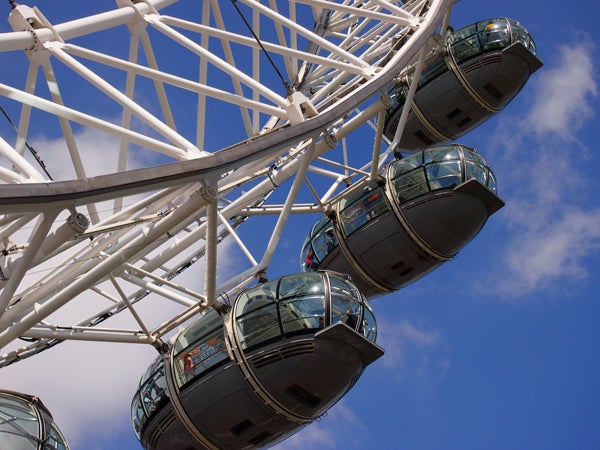
The new 14-42mm kit lens produces impressively sharp images – even in the corners
(1/640sec @ f/8, 42mm, ISO 200, AWB)

Images from the EP-3 are crisp and lifelike
(1/800sec @ f/9, 14mm, ISO 200, AWB)

With a max aperture of f/3.5 at 14mm, the EP-3 produces a helpfully shallow depth of focus
(1/2500sec @ f/3.5, 14mm, ISO 200, AWB)

The EP-3’s metering system is never short of reliable
1/1250sec @f/4.5, 16mm, ISO 200, AWB)

The EP-3 deals with high-contrast scenes very well indeed
(1/100sec @ f/4, 14mm, ISO 200, AWB)
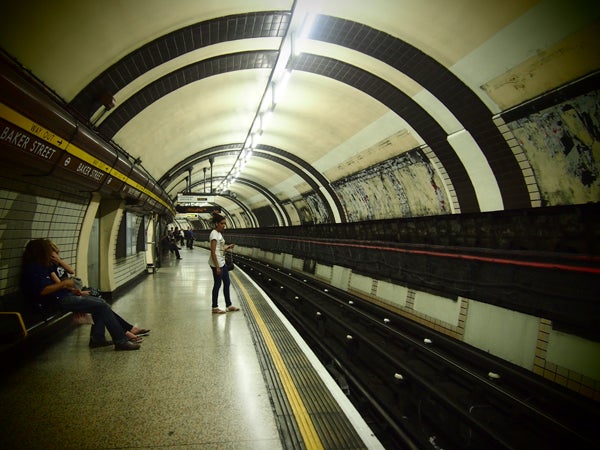
The ‘Pinhole Camera’ Art Filter in action
(1/25sec @ f/3.5, 14mm, ISO 640, AWB)
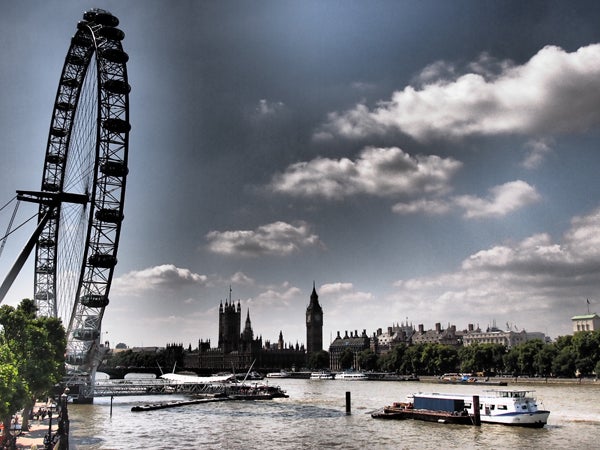
The ‘Dramatic Tone’ Art Filter
1/640sec @ f/11, 18mm, ISO 200, AWB)

The ‘Cross Process’ Art Filter
1/60sec @ f/3.5, 14mm, ISO 800, AWB)

The ”Pop Art’ Art Filter, shot in 16:9 aspect
(1/400sec @ f/5.6, 15mm, ISO 200, AWB)
Trusted Score
Score in detail
-
Value 7
-
Design & Features 9
-
Image Quality 9
-
Build Quality 8
Features
| Camera type | Micro Four Thirds |
| Megapixels (Megapixel) | 12.3 Megapixel |
| Optical Zoom (Times) | 3x |
| Image Sensor | 4/3'' Live MOS senso |
| Optical focal length | 14-42mm |
| Shutter speed | 2 - 1/4000sec |
| Auto focus | Contrast-detection system using 35 AF-points |
| Manual focus | Yes |
| Max output resolution | 4032 x 3024 |
| Other resolutions | N/A |
| Focus range | 0.25m - infinity |
| Exposure control | Program, Aperture-priority, Shutter-priority, Manual, iAuto, Art Filters, Scene |
| Exposure metering | TTL open aperture light metering, 324 zones |
| Exposure compensation | +/- 3E |
| Image Stabilisation | Yes, in-camera |
| ISO settings | 200-12,800 |
| LCD Monitor | 3inch OLED, 460k-dot |
| Viewfinder | No |
| Flash range | GN10 (@ ISO 200) |
| Flash modes | Auto, Manual, Manual (Full, 1/4, 1/16, 1/64), Red-eye reduction, Slow synch with red-eye reduction, Slow synch, Slow synch 2nd curtain, Fill-in, Off-camera |
| White balance modes | Auto, Tungsten, Flourescent, Sunlight, Flash, Overcast, Shade |
| Drive modes | Single, Continuous, timer |
| Image formats | JPEG, Raw |
| Picture adjustments | RAW data edit, Red-eye reduction, Sepia, Black & White, Resize, Correction of saturation, Shadow Adjustment, Trimming, e-Portrait |
| Video (max res/format) | Full HD 1920 x 1080, 60i, 17Mbps, AVCHD |
| Movie length | 7-29min depending on quality |
| Self timer | 2sec,12sec |
| Memory card slot | SD, SDHC |
| Supplied memory | None |
| Batteries supplied | Yes, Li-Ion |
| Charger supplied | Yes |
| A/V output | Yes |
| Charging/Computer Connection | Yes |
| HDMI | Yes |
| AV Out | Yes |
| Manual | Paper |
Physical Specifications
| Dimensions Width (Millimeter) | 109.5mm |
| Depth (Millimeter) | 34mm |
| Length (Millimeter) | 67.3mm |
| Weight (body only) (Kilogram) | 216gkg |

